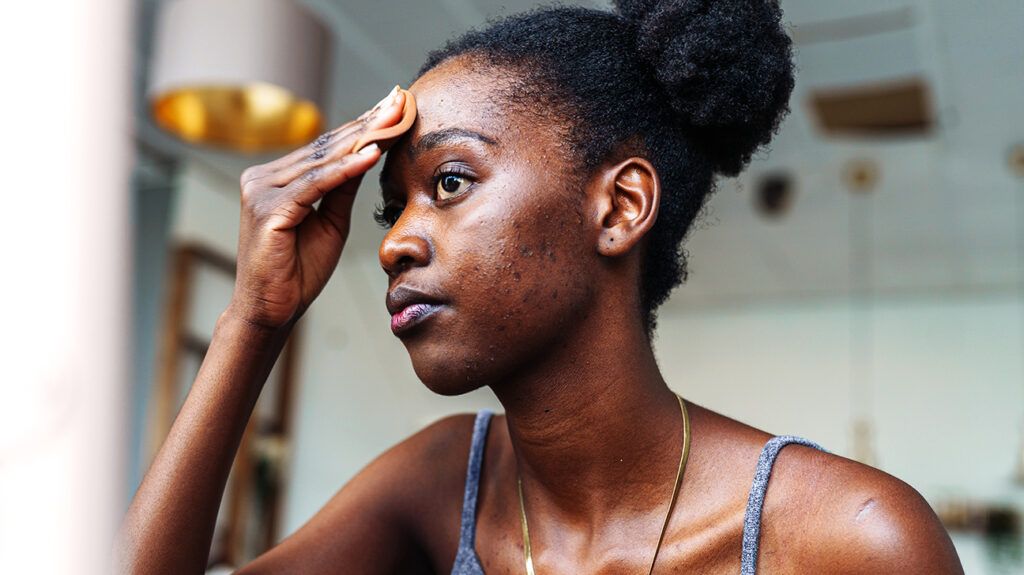Pustules are a type of pimple that contains yellowish pus. They are larger than whiteheads and blackheads. Home remedies and over-the-counter creams may help treat pustules.
Pustules appear either as red bumps with white centers or as white bumps that are hard and often tender to the touch. In many cases, the skin around the pustules is red or inflamed.
In this article, we look at the causes, appearance, and treatment of pustules.

A clogged pore is the root cause of any pimple, including pustules. Oil, bacteria, or dead skin can block the pore.
Pustules occur when the walls of the affected pore or pores begin to break down. As a result, pustules tend to be bigger than whiteheads and blackheads.
Acne and folliculitis are
Pustules contain pus because the body is trying to fight against the dirt or bacteria that has entered the pore. Pus is a natural product of the immune system, which consists
Pustules can occur anywhere, but they are
People often notice pustules around the following body parts:
- underarms
- hairline
- back
- shoulders
- pubic area
According to the American Academy of Dermatology (AAD), there are six common types of pimple:
- whiteheads
- blackheads
- pustules
- papules
- nodules
- cysts
Pimples share similar features because they all occur as a result of blocked pores.
Blackheads and whiteheads are the smallest types of pimple. Blackheads have open pores, whereas these are closed in whiteheads.
Papules and pustules are similar, and both are larger than blackheads and whiteheads. They occur when the pore’s walls break down, causing a bigger pimple to form.
Pustules are typically white and, unlike papules, they contain pus. A person may find that a pustule is tender to the touch.
Nodules and cysts are larger than papules and pustules and may need medical attention. With these types of pimple, the skin around the pore becomes very irritated. Nodules are hard to the touch, while cysts are soft.
Small pustules can heal on their own over time without any intervention, but treatments and home remedies can speed up this process.
People should try to keep the skin around the pustules clean and free of oil. They can do this by washing the area with warm water and mild soap twice a day.
Over-the-counter (OTC) creams, ointments, and soaps can help, particularly those that contain salicylic acid or benzoyl peroxide.
However, people should avoid using these products near the genitals.
It is important to avoid picking at or popping a pustule. Doing this can cause further damage and extend the healing process.
If home remedies do not work, people can speak to their doctor about prescription treatments. These stronger medications can often remove the pustules.
Acne products can dry out the skin. People with sensitive skin should look for products that are less irritating and could help moisturize the skin. If the skin becomes inflamed, a person should stop using the product.
Many people find home remedies effective for treating pimples, including pustules.
The following home treatments can help:
- Clay masks. A mask that contains natural clays can draw oil and dirt from the skin,
reducing the incidence of pimples. Learn about bentonite clay masks here. - Essential oils. Diluting and applying essential oils with anti-inflammatory properties, such as tea tree oil or rosemary oil, to the affected areas
may reduce the pain and inflammation of pimples. - Aloe vera gel. Aloe vera is a natural substance with antibacterial and anti-inflammatory properties that may help treat acne.
People can often prevent pustules by cleaning the areas of skin that are prone to pimples and keeping them oil free. Cleaning should occur at least twice a day and include a mild soap.
It is best to avoid using products that contain oils. These products include many types of moisturizer and some sunscreens. The oil can clog the pores and cause pustules to form.
Below are some commonly asked questions about pustules.
What is the main cause of pustules?
As with any type of pimple, pustules are caused by a clogged pore. Oil, bacteria, or dead skin can block the pore.
How do you get rid of pustules?
A person may be able to get rid of pustules by using over-the-counter (OTC) creams, ointments, and soaps that contain salicylic acid or benzoyl peroxide.
Home remedies such as
Failing that, a person should talk with a doctor about prescription treatments.
Do pustules go away on their own?
Pustules usually go away on their own. If a person has severe acne, with treatment, it can take roughly 6 weeks for a pustule to clear up.
Pustules are irritating but otherwise harmless, and they usually go away on their own. People can often prevent them or reduce their severity by keeping pustule-prone areas clean and oil free.
Many OTC treatments contain ingredients that can be effective against pustules. If the pustules get worse, do not clear up on their own, or are chronic, a person should speak to their doctor about additional treatment options.
